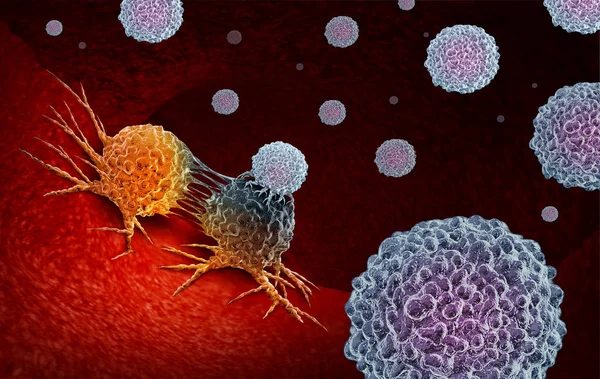Exosome Based Cancer Therapy: The Future of Targeted Treatment – Oncodaily

Report on Exosome-Based Cancer Therapy and its Contribution to Sustainable Development Goals
Introduction: Advancing SDG 3 Through Innovative Oncology
Exosome-based cancer therapy represents a significant advancement in targeted drug delivery, directly aligning with the United Nations Sustainable Development Goal 3 (SDG 3), which aims to ensure good health and well-being for all. By utilizing natural cellular vesicles to deliver therapeutic agents specifically to cancer cells, this approach promises to enhance treatment efficacy and reduce off-target effects, contributing to Target 3.4: reducing premature mortality from non-communicable diseases. This report outlines the mechanisms, advantages, and challenges of exosome-based therapies, highlighting their potential as a transformative tool in oncology and a key innovation for global health objectives.
Characteristics and Formation of Exosomes
Exosomes are naturally secreted extracellular vesicles that function as intercellular messengers. Their unique properties make them ideal candidates for drug delivery systems, supporting the development of novel medical technologies as encouraged by SDG 9 (Industry, Innovation, and Infrastructure).
Physical and Biological Properties
- Size: Typically range from 30 to 150 nanometres (nm) in diameter.
- Structure: Composed of a double-layered phospholipid membrane containing lipids, proteins, and nucleic acids.
- Biocompatibility: As they are derived from endogenous cells, exosomes exhibit high biocompatibility, stability, and minimal immunogenicity.
- Cargo: They transport physiologically active substances such as proteins, microRNA, mRNA, and DNA, which can be delivered to recipient cells.
- Barrier Permeability: Their nano-scale size allows them to navigate through the extracellular space and cross biological barriers, enhancing delivery to hard-to-reach tumors.
Methodologies for Loading Therapeutic Molecules into Exosomes
The effective loading of therapeutic cargo into exosomes is critical for their clinical application. Two primary strategies are employed, each with distinct advantages and limitations.
Endogenous (Pre-Secretory) Loading
In this method, therapeutic agents are loaded into donor cells before the exosomes are secreted. This is achieved through two main techniques:
- Coincubation: Parental cells are co-cultured with a therapeutic agent (e.g., paclitaxel), which enters the cytoplasm and is subsequently packaged into exosomes.
- Genetic Modification: Parental cells are genetically engineered via transfection to overexpress a desired therapeutic agent, such as a specific RNA or protein.
The primary advantage of this approach is the preservation of exosome integrity. However, drug-loading efficiency can be low and difficult to control.
Exogenous (Post-Secretory) Loading
This common method involves loading cargo into exosomes after they have been isolated and purified from the parent cells. Techniques include:
- Active Loading: Methods like electroporation and sonication are used to create temporary pores in the exosome membrane to allow cargo entry.
- Passive Loading: Incubation is used to load hydrophobic drugs, which diffuse across the exosomal membrane along a concentration gradient.
This approach offers higher loading efficiency but carries the risk of compromising the structural integrity of the exosomes.
Mechanisms of Cancer Cell Recognition and Targeting
The ability of exosomes to specifically target cancer cells is fundamental to their therapeutic potential and a key factor in improving health outcomes in line with SDG 3. This specificity is determined by the unique molecular composition of the exosome surface, which is inherited from the cell of origin.
Key Surface Molecules
- Common Proteins: Exosomes universally contain proteins such as tetraspanins (CD9, CD63, CD81), which mediate cell-cell communication and membrane fusion.
- Specific Proteins: Exosomes derived from specific cell types carry unique proteins. For example, tumor-derived exosomes may display tumor-specific antigens that bind to receptors on other cancer cells.
- Lipid Composition: A unique lipid profile, rich in cholesterol and sphingomyelin, contributes to exosome stability and facilitates uptake by recipient cells.
- Nucleic Acids: Exosomes carry various RNAs (e.g., miRNA, siRNA) that can serve as diagnostic biomarkers and therapeutic agents.
Comparative Advantages Over Traditional Drug Delivery Systems
Exosome-based therapies offer several advantages that align with the global health goal of providing safer and more effective treatments.
- Enhanced Targeting: Natural surface molecules enable precise homing to target cells, increasing drug concentration at the tumor site and minimizing systemic toxicity.
- Improved Biocompatibility: Being of biological origin, exosomes are less likely to trigger an immune response compared to synthetic nanoparticles.
- Protective Cargo Delivery: The exosomal membrane protects therapeutic payloads from degradation in the bloodstream, ensuring their stability until they reach the target.
- Superior Delivery Efficiency: Clinical studies have shown that exosome-based carriers can achieve 4–10 times higher delivery efficiency to target cells compared to synthetic nanoparticles.
Challenges Limiting Clinical Implementation
Despite their promise, several challenges must be addressed to facilitate the widespread clinical use of exosome therapeutics and fully realize their potential for achieving SDG 3.
- Scalability and Standardization: Developing robust, economical, and scalable methods for producing and purifying clinical-grade exosomes remains a major hurdle.
- Drug Loading Efficiency: Current methods can result in poor or inconsistent drug loading, limiting therapeutic efficacy.
- In Vivo Stability: Exosomes can be cleared quickly from circulation, and their long-term stability under pharmaceutical storage conditions (e.g., -80°C) is impractical.
- Quality Control: A lack of standardized validation and characterization methods complicates the regulatory approval process.
Current Progress and Future Potential for Global Health
Research has confirmed that exosomes are deeply involved in cancer progression, including proliferation, metastasis, and the epithelial-to-mesenchymal transition (EMT). By harnessing exosomes as delivery vehicles, it is possible to turn these pathogenic mechanisms into therapeutic targets. The future of exosome-based treatments lies in their potential to offer personalized, highly targeted therapies that can overcome the limitations of conventional chemotherapy. Continued innovation in this field is essential for developing next-generation cancer treatments that can significantly reduce cancer mortality rates, directly contributing to the achievement of SDG Target 3.4 and fostering a healthier future for all.
Analysis of Sustainable Development Goals in the Article
1. Which SDGs are addressed or connected to the issues highlighted in the article?
SDG 3: Good Health and Well-being
- The article’s central theme is the development of exosome-based cancer therapy, a novel medical treatment aimed at improving health outcomes for cancer patients. This directly aligns with the goal of ensuring healthy lives and promoting well-being for all at all ages. The text focuses on creating a more effective and targeted treatment for a major non-communicable disease, which is a core component of SDG 3.
SDG 9: Industry, Innovation, and Infrastructure
- The article extensively discusses cutting-edge scientific research, advanced molecular technology, and the development of a new nanocarrier for drug delivery. This represents a significant innovation in the field of biotechnology and medicine. The exploration of new techniques, the challenges in scalability, and the potential for future applications are all related to enhancing scientific research and upgrading technological capabilities, which is a key aspect of SDG 9.
2. What specific targets under those SDGs can be identified based on the article’s content?
SDG 3: Good Health and Well-being
-
Target 3.4: By 2030, reduce by one third premature mortality from non-communicable diseases through prevention and treatment and promote mental health and well-being.
- The article focuses on a new therapy for cancer, which is one of the leading non-communicable diseases (NCDs) causing premature mortality. By describing a more efficient and targeted treatment (“exosome-based cancer drug carriers have shown 4–10× higher delivery efficiency”), the research directly contributes to the “treatment” aspect of this target, aiming to improve survival rates and reduce mortality from cancer.
-
Target 3.b: Support the research and development of vaccines and medicines for the communicable and non-communicable diseases that primarily affect developing countries, provide access to affordable essential medicines and vaccines.
- The entire article is a detailed account of the “research and development” of a new medical technology (“exosome-based cancer therapy”) for treating an NCD. It highlights the “surge of research focused on harnessing exosomes as drug carriers” and discusses the ongoing efforts to overcome challenges to unlock its clinical potential, which is the essence of this target.
SDG 9: Industry, Innovation, and Infrastructure
-
Target 9.5: Enhance scientific research, upgrade the technological capabilities of industrial sectors in all countries… including… encouraging innovation and substantially increasing the number of research and development workers… and public and private research and development spending.
- The article is a clear example of enhanced scientific research in nanobiotechnology. It details innovative approaches like “endogenous (pre-secretory) loading” and “exogenous (post-secretory) loading” of exosomes. The discussion of challenges such as “scalability, stability, and validation” and the call for “further studies are necessary to address major limitations” underscore the ongoing process of research, innovation, and upgrading technological capabilities described in this target.
3. Are there any indicators mentioned or implied in the article that can be used to measure progress towards the identified targets?
Indicators for SDG 3 Targets
- Delivery Efficiency of Therapeutic Agents: The article explicitly states a quantifiable measure of progress: “In some clinical trials, exosome-based cancer drug carriers have shown 4–10× higher delivery efficiency to target cells compared to synthetic nanoparticles.” This serves as a direct indicator of improved treatment efficacy, which contributes to reducing mortality (Target 3.4).
- Level of Research and Clinical Trials: The article repeatedly mentions “clinical trials” and cites numerous scientific publications (e.g., *J Nanobiotechnol*, *Int J Nanomedicine*). The number of ongoing clinical trials and the volume of research publications on exosome-based therapies are implied indicators of the progress in research and development (Target 3.b).
Indicators for SDG 9 Target
- Development of New Methodologies: The article describes specific technological advancements, such as different drug-loading techniques (“electroporation and sonication,” “coincubation,” “genetic modification”). The creation and refinement of these methods are indicators of innovation and enhanced scientific research (Target 9.5).
- Focus on Overcoming Research Challenges: The text identifies specific challenges that limit clinical use, such as “poor drug loading, reduced in vivo stability, a need for robust, economical, and scalable production methods.” Progress in solving these specific technical problems can be measured and serves as an indicator of upgrading technological capabilities (Target 9.5).
4. Create a table with three columns titled ‘SDGs, Targets and Indicators” to present the findings from analyzing the article. In this table, list the Sustainable Development Goals (SDGs), their corresponding targets, and the specific indicators identified in the article.
| SDGs | Targets | Indicators |
|---|---|---|
| SDG 3: Good Health and Well-being |
3.4: Reduce premature mortality from non-communicable diseases (NCDs) through treatment.
3.b: Support the research and development of medicines for NCDs. |
|
| SDG 9: Industry, Innovation, and Infrastructure | 9.5: Enhance scientific research, upgrade technological capabilities, and encourage innovation. |
|
Source: oncodaily.com
What is Your Reaction?
 Like
0
Like
0
 Dislike
0
Dislike
0
 Love
0
Love
0
 Funny
0
Funny
0
 Angry
0
Angry
0
 Sad
0
Sad
0
 Wow
0
Wow
0



















































.jpg.webp?itok=0ZsAnae9#)
























